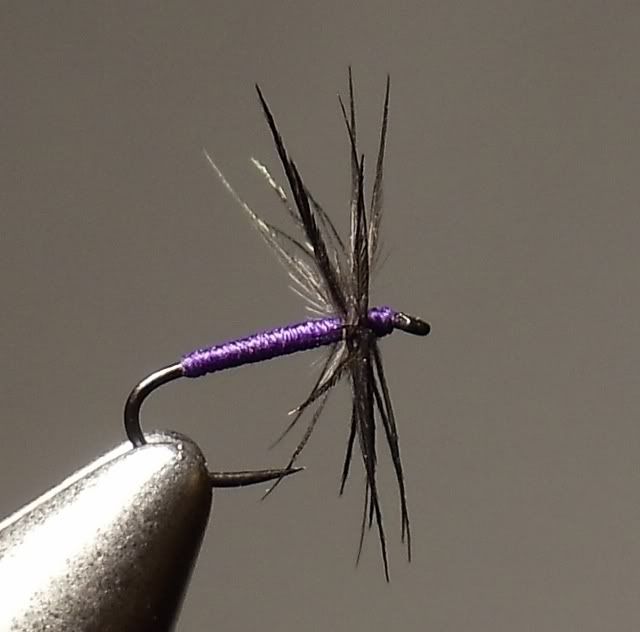The posts by Bill (tie2fish), Wayne (DUBBN) and Hans have gotten me thinking (
dangerous I know) about ways of reducing the size these tiny flies even further. It occurred to me that one way to reduce the size of the head was to eliminate it all together and just do the whip finish over the bare hook shank. As I thought more about it, I then wondered if the hackle could just be moved to the other end of the fly. This would remove the bulk from behind the hook eye and help obsure the point of the hook by disguising it within the hackle fibers. Perhaps improving the illusion of a tiny insect in the process.
Here is the result of my ponderings:
 Hot Orange & Starling
Hot Orange & Starling
Hook - Tiemco TMC Model 102Y/Size 19
Thread - Pearsalls Gossamer Silk (Hot Orange / No. 19)
Hackle - Starling Back Feather
DETAILED TYING SEQUENCE:
1) Mount hook in vice
2) Cast on the tying thread, leaving as small gap of bare hook shank behind the eye of the hook. The bare gap should be roughly the length of three to four wraps of thread. This gap will be filled in when the fly is finished.
3) Wrap the tying thread towards the bend of the hook, in closely touching turns. Stop just above the point of the hook.
4) Prepare a starling hackle by peeling off the fuzzy fibers along the base of the feather. In this case I left fibers on both sides of the feather. If you want fewer hackle fibers, you will need to strip them off one side of the feather.
5) Tye in the feather by the stem, with four of five secure wraps.
6) Grasp the tip of the hackle in the hackle pliers and make two wraps forward (towards the eye of the hook). Wrap the hackle in the reverse direction from the way the tying thread is being wrapped. (i.e. - Counter-wrapping)
7) Wind the tying thread forward thru the hackle fibers, being sure to wiggle it back and forth to prevent trapping the fibers. The tying thread will cross the hackle stem, reinforcing the stem and creating a more secure fly.
8) Continue wrapping the tying thread towards the eye of the hook, in close touching turns. When you get to the bare shank, next to the eye, stop.
9) Make a four turn whip finish over the bare shank and clip off the tying thread
I think this method can be scaled down to very tiny versions, without problems with tying bulk. I think a "thorax" could be add on the bend-side of the hackle, to ensure that the hackle does not simple become a tail.
What are your thoughts on this construction? Good, bad or otherwise. Feedback is welcome.
(
Bill - I hope you don't mind me hijacking your thread. Just say the word and I will move it to an independent post. No worries, Mate.)


